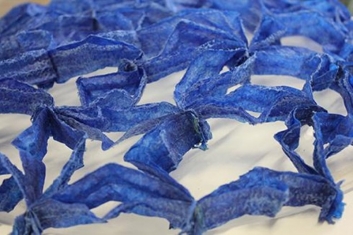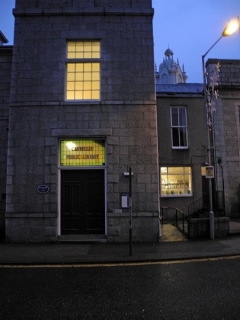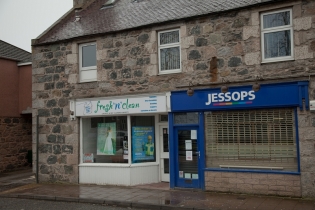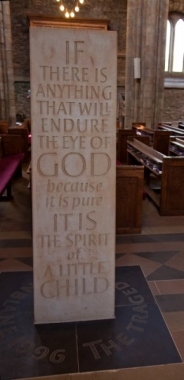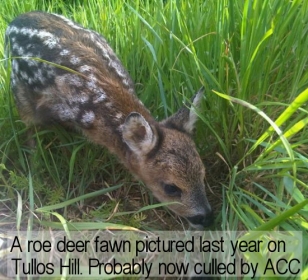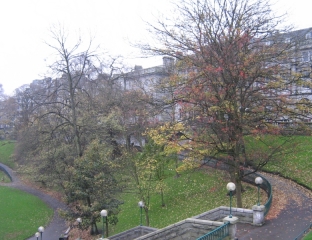Suzanne Kelly reports on the serious issues raised by the modus operandi of Aberdeen City Council with regard to the recent deer cull.
It is nearly two weeks since the general public were dismayed to learn that 22 of 29 deer were destroyed to further the ‘tree for every citizen’ scheme which was so vigorously promoted by the Liberal Democrats and a handful of City Officials.
As an indicator of how extremely unscientific this entire project is, it seems that only one deer count was done before the shooting started, and it failed to identify the sex of half of the deer it counted.
The shooting secretly started around 18 February (an early start which needed Scottish Natural Heritage approval), and seems to have continued until the end of the official season.
It is only now that the general public realise that a gunman was on the hill shooting a rifle: and that the City took a lethal risk to people’s lives to kill the deer.
This article looks at the risks we didn’t know were being taken with our safety, and recommends the entire matter be made the subject of a city council investigation, possibly with impartial, outside agency involvement.
A document entitled ‘Granite City Forest Deer Management – Risk Assessment’ was obtained some time ago under Freedom of Information legislation.
It can be found at http://suzannekelly.yolasite.com/
This document alarmingly acknowledged that hazards identified included:
- “Injury from firearm discharge (either via blocked barrel or obstructed view) when shooting deer;
- “Uncontrolled access to firearm(s) and ammunition; and
- “Trajectory of bullets beyond target (ie living roe deer) impacting on non target species” (ie anything from small birds and mammals to people).
This document acknowledges that ‘who might be harmed’ included not only those involved in destroying the deer, but also the general public.
Having identified the hazards listed above, the document goes on to answer ‘who might be harmed’ and ‘what harm might result’, although its treatment of the issues is superficial at best. The harm that might have occurred included ‘Possibility of fatal injuries from misuse of / damage to firearms’.
The main reason no one believed any culling was going on was the complete absence of any notices to that effect being put up.
For some inexplicable reason – which needs to be scrutinised along with so many features of this whole sorry saga – is the absence from the report of many other possibilities, including the obvious risk of non-fatal injuries of many kinds to the general public and ‘other species’.
The control measures sited as risk mitigation are almost laughable – but the real issue is the ‘who might have been harmed’ aspect: the shooting was going on while people were still on the hill. This is wholly unacceptable.
You may wonder why I am only highlighting this Risk Assessment document now – the answers are very simple. For starters, the police were asked on several occasions if they knew of any shooting for the deer cull taking place, and the answer was always no. Councillors who had asked to be informed of any shooting seem not to have been kept in the loop, either.
But the main reason no one believed any culling was going on was the complete absence of any notices to that effect being put up. The very first ‘Contingency arrangements required to reduce risk’ item listed in the Risk Assessment is this:
“Cautionary notices will be placed at all known access points to the sites where deer management is taking place.”
No one I spoke with, nor anyone I know who visited the hill regularly (and many went with the specific aim of watching out for culling activities) ever saw a sign or notice to this effect whatsoever. I was keen to visit as often as possible after dusk, and made many trips (only seeing a deer close up once in a gorse thicket which has now been bulldozed).
The question must be asked – did City officials decide not to erect any signs to keep this unpopular cull secret? If the answer is yes, then our lives and safety were recklessly risked for propaganda purposes.
We now have to wait to find out what days shooting took place, who posted the notices, how big they were, and where they were posted. I can promise you that I never saw any, and I have been using four different entrance points, including the main entrance where the Loirston Park sign is.
The City also relied on the expertise of the shooter – but even the best marksmen make errors. Think of the high-profile American accidental shooting – allegedly by Cabinet Member Dick Cheney of a Mr Whittington. In the UK, hunting accidents also happen. Finding reliable statistics is not quite so easy – internet searches for hunting accidents seem to result in the appearance of pro-hunting lobbyists putting up unrelated (and questionable) statistics about damage done by deer.
The Health and Safety Executive seems to lump hunting, forestry and all agricultural accidents into one category – in which there are hundreds of accidents any year.
These questions need to be answered, and I will be formally calling on authorities to have a comprehensive investigation.
Whatever the numbers are, the presence of a notice of shooting on the hill would have at least let people make an informed judgement as to whether to be on the hill or not. But just like the consultation on the trees (which deliberately omitted mention of a cull or the cost of the previous failure – or the sheer scale of trees proposed) – someone, somewhere took the information needed for our decision-making out, and hid it.
A sign would not have been much use at dawn or dusk; how could it have been visible? Any sign should have been put up in several languages (Polish and French visitors frequent the hill and a sign in English might have been of no use to such people at all). But a sign and the requirement for the shooter to be diligent are hardly sufficient mitigation for potential lethal risk. The shooter is also meant not to hunt ‘…when public, contractors or other ACC operatives are known to be on site’.
This is almost meaningless: access was not prohibited, the site is massive, and bullets can travel a long, long way. How could anyone possibly ascertain no people were in the vicinity?
It is one thing to create a Risk Assessment document. It is quite another for its robustness and completeness to be agreed and for it to be approved. Who wrote this document? Who was involved in agreeing it was fit for purpose? Whose name ultimately went on a document which acknowledged lethal risk? Were signs used or not? These questions need to be answered, and I will be formally calling on authorities to have a comprehensive investigation.
A former ghillie I know tells me how very difficult it is to shoot a deer, and in his experience deer were known to be injured severely if not brought down with the first initial shot. Some wounded deer can completely evade the hunter, and travel great distances before dying in shock and pain of blood loss and internal injury.
Our man from the Aberdeen City Council with a license has been shooting things for over 20 years, according to the risk assessment document; are we to suppose his eyesight has not deteriorated at all in this time period? Statistically if he shot 22 animals, how likely or otherwise is it that each and every animal died instantly where it stood?
These deer were nearly tame; people who stay in the nearby caravans advise they had fed the deer by hand
Ironically, the deer shooter referred to in the document is also a point of contact between the Scottish SPCA and the city council: the Scottish SPCA has been opposed to this cull from the idea’s inception. It is unclear whether the shooter would have been likely to report any bad shots or injured deer he caused to the Scottish SPCA.
The remains of a deer were pointed out to me in an area which had a great deal of tree and plant life – could this deer have not died of natural causes (starvation seemed unlikely amid the sources of food) – but rather could it have been wounded, run away and died of shock, slowly and painfully? We will have to wait for a FOI request which asked how many shots were fired, and how many animal carcasses were removed.
These deer were nearly tame; people who stay in the nearby caravans advise they had fed the deer by hand and grown food specifically for them. This makes it even more galling that the Risk Assessment provides for putting the carcasses of these much-loved animals into the food chain. But that is exactly what happened. In an almost sarcastic turn, the risk assessment covers the point that the man preparing the animals for food might be at risk of cutting himself on his sharp knives, or sprain a muscle moving the dead animals.
For the record, the level of fatal injury to you or I was calculated to be at the lowest level.
It is likely that Ranger Ian Tallboys, staunch supporter of the cull (although he seems never to have formally proposed a cull before the tree scheme became a political promise) did the shooting and the preparing of the carcasses for meat. He is about the longest-serving ranger I am aware of, and part of the ‘control measures’ were to have an ‘experienced and competent operative’ perform the shooting.
Tallboy’s current silence on the matter is matched only by his silence over building the football stadium at Loirston in the Special Areas of Conservation area, and the silence of Aileen Malone post election. Malone was the main proponent of the scheme, often claiming it was ‘cost neutral’ – a claim now completely debunked.
Another person responsible for the whole scheme is Peter Leonard, city council officer, whose original report to the Housing & Environment Committee was the death knell for the deer. The contents of his report need some urgent investigation; claims of ‘cost neutral’ planting, advice against tree guards, etc. etc. have been shown to be inaccurate if not misleading.
Only a proper investigation will get to the bottom of the genesis and management of this unwanted, unprofitable, destructive scheme
There are now the correct size tree guards in place – the City initially bought smaller than recommended guards.
Furthermore, the SNH and the City corresponded saying tree guards were unsuitable as they had ‘visual impact’.
What has changed?
Leonard also seems to have had a hand in the disappearance of Councillor Cooney’s paper on keeping Tullos as a meadowland; Leonard is on record as saying that the meadow would be more expensive than imposing an 89,000 tree forest and killing the deer: how exactly he reached this conclusion will be interesting to determine; he should be invited to explain how and when his research reached this conclusion, how he reached conclusions in his original report which now seem incorrect, and whether or not he had a hand in Cooney’s paper disappearing from sight.
The actions of some of our officers and unelected city employees seem to have fallen unfailingly into the plans of the Liberal Democrats.
Only a proper investigation will get to the bottom of the genesis and management of this unwanted, unprofitable, destructive scheme, and find out who did / did not overstep the bound of their job, and whether any political (or other) pressure was used to bring us to where we are now.
If you care about the future of Tullos Hill, all of its (remaining) creatures and meadow; if you care about a small minority of persons dictating to thousands who oppose their plans; if you care that tens of thousands of pounds have been spent which could have been better used elsewhere – then please write to your councillors and ask for an inquiry to be held.
The deer are dead – and you and your families were possibly put at risk. The issues thrown up must be investigated so that there is never a repeat performance.
